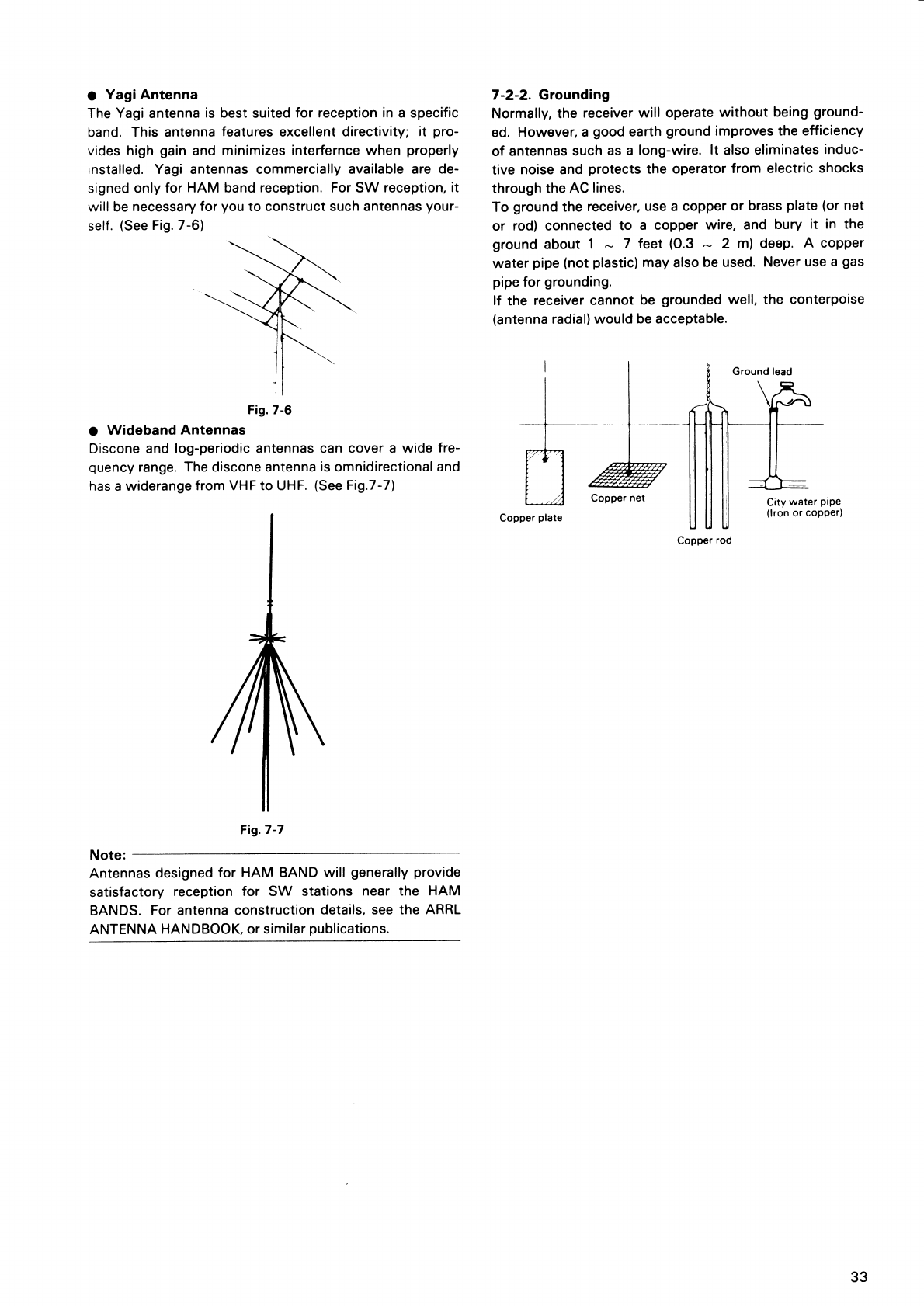
• Yagi Antenna
The Yagi antenna is best suited for reception in a specific
band. This antenna features excellent directivity; it pro-
vides high gain and minimizes interference when properly
installed. Yagi antennas commercially available are de-
signed only for HAM band reception. For SW reception, it
will
be necessary for you to construct such antennas your-
• Wideband Antennas
Discone and log-periodic antennas can cover a wide fre-
quency range. The discone antenna is omnidirectional and
has
a widerange from VHF to UHF. (See Fig.7-7)
Note:
Antennas designed for HAM BAND will generally provide
satisfactory reception for SW stations near the HAM
BANDS. For antenna construction details, see the ARRL
ANTENNA HANDBOOK, or similar publications.
7-2-2. Grounding
Normally, the receiver will operate without being ground-
ed. However, a good earth ground improves the efficiency
of antennas such as a long-wire. It also eliminates induc-
tive noise and protects the operator from electric shocks
through the AC lines.
To ground the receiver, use a copper or brass plate (or net
or rod) connected to a copper wire, and bury it in the
ground about 1 , 7 feet (0.3 ~ 2 m) deep. A copper
water pipe (not plastic) may also be used. Never use a gas
pipe for grounding.
If the receiver cannot be grounded well, the conterpoise
(antenna radial) would be acceptable.
33


















